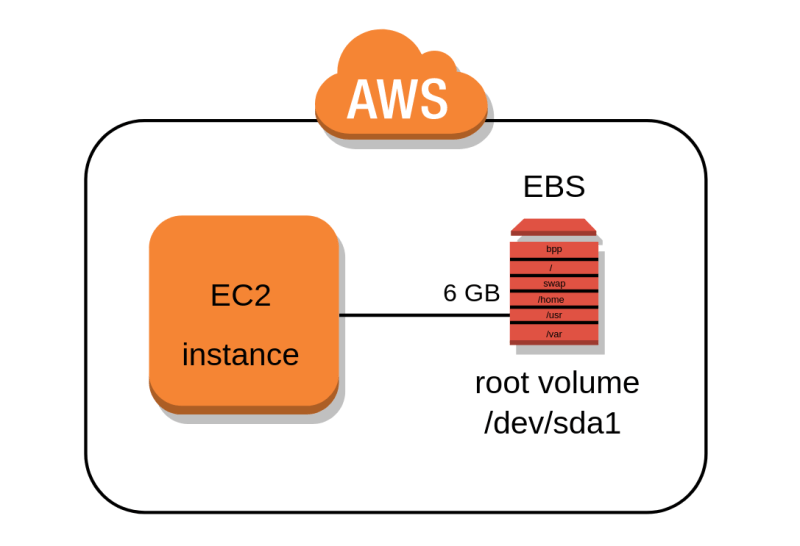Amazon Elastic Compute Cloud

Amazon Elastic Compute Cloud – This article has several problems. Please help us fix it or discuss this issue on the talk page. (Learn how and how to remove this template message)
The content of this article may be too short to adequately summarize the important points. Please consider expanding the contact to provide an accessible overview of all important aspects of the article. (July 2014)
Amazon Elastic Compute Cloud

This article may need to be rearranged to conform to Wikipedia’s layout guidelines. Please help by editing the article to improve the overall structure. (February 2015) (Learn how and how to remove this template message)
Top 21 Aws Services For 2023
Amazon Elastic Compute Cloud (EC2) is part of Amazon.com’s cloud computing platform, Amazon Web Services (AWS), which allows users to host virtual computers to run their computing applications. EC2 promotes scalable application delivery by providing web services that allow users to run Amazon Machine Images (AMIs) to provision virtual machines, which Amazon calls “instances,” that contain any desired software. Users can create, start and stop server instances as needed, paying per second for an active server, hence the term “elastic”. EC2 provides users with control over the geographic location of instances enabling latency optimization and a high degree of redundancy.
Offering access on a first-come, first-served basis. On October 16, 2007, Amazon added two new instance types (large and larger).
User selectable static IP address, availability zone and core. August 20, 2008 Amazon adds Elastic Block Store (EBS)
Amazon EC2 was in full production when it released the beta tag on October 23, 2008. On the same day, Amazon announced the following features:
Intel Powers Latest Amazon Ec2 General Purpose Instances With 3rd Gen Intel Xeon Scalable Processors
Pinkham provided initial architectural direction for EC2 and coached the team and led project development with Willem van Biljon.
A new family of C5 instances based on a custom architecture around a KVM hypervisor called Nitro.
Each virtual machine, called an “instance”, functions as a virtual private server. Amazon instance sizes based on “Elastic Compute Units”. Performance of similar virtual machines may vary.

On November 28, 2017, AWS announced a bare metal instance offering, a significant change from offering only virtual instances.
Launch Your First Aws Cloud Ec2 Server (windows )
, Amazon charges about $0.0058 per hour ($4,176 per month) for the smallest “Nano Instance” (t2.nano) virtual machine running Linux or Windows. Storage-optimized instances cost up to $4,992 per hour (i3.16xlarge). “Reserved” instances can cost as little as $2.50 per month for a 3-year prepaid plan.
Data transfer rates range from free to $0.12 per gigabyte, depending on direction and monthly volume (inbound data transfer is free on all AWS services
EC2 costs can be analyzed using Amazon’s Cost and Usage report. There are many different cost categories for EC2, including: hourly instance costs, data transfers, EBS volumes, EBS volume snapshots, and Nat Gateway.
Free resource credit pack for new account holders. Credits are designed to run “micro” servers, storage (EBS) and bandwidth for one year.
Introducción Al Servicio Amazon Ec2 (elastic Compute Cloud) » Certi+
Reserved Instances allow users of EC2 or RDS services to reserve instances for one or three years. The corresponding hourly rate Amazon charges for running instances is 35 to 75% lower than the price charged for On-Demand Instances.
Reserved Instances can be purchased with three different payment options: Full Advance, Partial Advance and No Advance. The different purchase options allow the structuring of different paymt models, with greater discounts for customers who pay for their order in advance.
Reserved Instances are purchased based on resource commitments. These orders are made based on the type of instance and the number of that instance type. For example, you can order 100 i3.large instances for a period of 3 years.

In September 2016, AWS announced several changes to Reserved Instances, introducing a new feature called scope and a new reservation type called Convertible.
Automating Your Cloud Infrastructure With Ansible Creating Aws Ec2 Instances Made Easy
Amazon EC2 Spot Instances are spare computing capacity in the AWS Cloud available at up to 90% off On-Demand pricing.
In exchange, AWS offers no SLA for this situation, and customers run the risk that they could be terminated with as little as two minutes’ notice when capacity needs to be returned to Amazon. Researchers at the Israel Institute of Technology found that “they (spot cases) are usually generated randomly in a narrow price range through dynamic hidden reserve prices.”
Some companies, like Spotinst, use machine learning to predict outages up to 15 minutes in advance.
Which comes in two different plan types: Compute Storage Plan and EC2 Instance Storage Plan. Compute Savings Plans allow organizations to commit to EC2 and Fargate with the freedom to change regions, households, sizes, Availability Zones, operating systems and tancy during the commitment period. The EC2 Instance Storage Plan offers greater discounts than the Inventory Plan, but is less flexible, meaning users must commit to a family of individual instances in a region to take advantage of it, but with the freedom to modify instances within that family. region.
Genomics Workflows, Part 2: Simplify Snakemake Launches
AWS uses Cost Explorer to automatically calculate a recommendation for the commitment you need to make so that the commitment appears as a monthly charge in your AWS account.
AWS storage plans are purchased on an hourly spd commit basis. This hourly commitment is made using the discount rate of the savings plan you purchased. For example, you can commit to spending $5 an hour on the Savings Plan for 3 years.
When it launched in August 2006, the EC2 service offered Linux and later Sun Microsystems OpSolaris and Solaris Express Community Editions. In October 2008, EC2 added the Windows Server 2003 and Windows Server 2008 operating systems to the list of available operating systems.

Amazon has its own Linux distribution based on Fedora and Red Hat terprise Linux as a low-cost offering known as Amazon Linux AMI. Version 2013.03 includes:
Introduction To Amazon Elastic Compute Cloud (ec2)
On November 30, 2020, Amazon announced it would add macOS to its EC2 service. Early support has been announced for macOS Mojave and macOS Catalina running on Mac mini.
You can launch an EC2 instance by choosing between two types of storage for the startup disk or “root device”. The first option is the local “instance-store” disk as the root device (originally the only option). Another option is to use an EBS volume as the root device. The instance store volume is a temporary archive, which survives EC2 instance restarts, but when the instance is stopped or terminated (eg by an API call or due to an error), this archive is lost.
Amazon Elastic Block Store (EBS) provides raw block devices that can be attached to Amazon EC2 instances. This block device can be used like any raw block device. In a typical use case, this would involve formatting the device with its file system and mounting it. Additionally, EBS supports several advanced archiving features, including logging and cloning. The EBS volume can be up to 16TB in size. EBS volumes are built on replicated storage, so component failure will not cause data loss. EBS was introduced to the public by Amazon in August 2008.
EBS volumes provide persistent storage independent of the EC2 instance lifetime and behave like hard drives on real servers. More specifically, it appears as an operating system block device supported by Amazon disk arrays. The operating system is free to use the device as it wishes. In the most common case, the file system is mounted and the volume behaves like a hard disk. Another possible use is to create a RAID array by combining two or more EBS volumes. RAID allows you to increase the speed and/or reliability of EBS. Users can configure and manage storage volumes from 1GB to 16TB. Volumes support snapshots, which can be taken from a GUI tool or API. EBS volumes can be attached or removed from an instance while it is running and moved from one instance to another.
Install Docker On Amazon Ec2
Simple Storage Service (S3) is a storage system where data is available to EC2 instances or directly over the network to the appropriate authorized callers (all communication over HTTP). Amazon does not charge bandwidth for communication between EC2 instances and S3 storage “in the same region”. Access to S3 data stored in other Regions (for example, data stored in Europe from a US East Coast EC2 instance) will be billed at Amazon’s normal rate.
S3-based storage is billed per gigabyte per month. Applications access S3 through an API. For example, Apache Hadoop supports a special s3 file system: which supports reading from and writing to S3 storage during MapReduce jobs. There is also the S3 file system for Linux, which mounts remote S3 files on EC2 images, as if they were local archives. Since S3 is not a full POSIX filesystem, things may not behave as they do on local disks (eg no block support).
Amazon Elastic IP addresses are similar to static IP addresses in traditional data, with one key difference. Users can programmatically map an Elastic IP address to any virtual machine instance without a network










No Comments